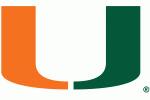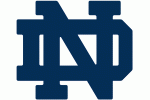The NBA Draft Combine treated Malcolm well.
 The Combine focuses primarily on your basic body measurement stuff (body fat measurements, vertical leap, some simple sprints) a handful of shooting drills, and some light scrimmaging, so I wasn’t that worried about him — if he can make 17-footers with Justin Jackson’s hands in his face, he can make them off the bounce in an empty gym, and I feel like his size and strength will make up for his lack of blazing speed — but I was watching with the hope that he’d at least hold his own to maintain the buzz that he’s a lock for the second round with an outside chance of sneaking into the first. I was most worried that he’d either struggle in the sprints against other guards or that his jumper — kinda flat on a good day, needs the spare flat on a bad day — wouldn’t stretch to the NBA three point line, a must for a wing these days (ask Andre Roberson).
The Combine focuses primarily on your basic body measurement stuff (body fat measurements, vertical leap, some simple sprints) a handful of shooting drills, and some light scrimmaging, so I wasn’t that worried about him — if he can make 17-footers with Justin Jackson’s hands in his face, he can make them off the bounce in an empty gym, and I feel like his size and strength will make up for his lack of blazing speed — but I was watching with the hope that he’d at least hold his own to maintain the buzz that he’s a lock for the second round with an outside chance of sneaking into the first. I was most worried that he’d either struggle in the sprints against other guards or that his jumper — kinda flat on a good day, needs the spare flat on a bad day — wouldn’t stretch to the NBA three point line, a must for a wing these days (ask Andre Roberson).
He performed well in shooting drills, hitting 21-25 15-footers, 29 of 40 shots taken off the dribble between 15 feet and the college three point line, and soothed my angst over his ability to hit from the NBA three point line by making 13 of his 25 NBA threes and seven of 10 from the corners, which is where he’ll be spending a fair amount of time at the beginning of his career. If he hadn’t been shut out from the top of the key (0-5), his numbers would have been even better, but I don’t see the top of the arc (increasingly the provenance of point guards and trailing bigs in the modern NBA) as Malcolm’s bread and butter going forward.
Physically, he surprised some people. He placed ninth in the agility drill and recorded the best time in the shuttle run, stats that illustrate how well he is able to change direction (and thusly how well he was able to stick with guards one would have assumed would beat him in a race). Those faster guards (and some bigs like Brice Johnson) placed ahead of Malc in the sprints (he was unremarkable at best in the three-quarter court sprint), but he at least held his own in the vertical jump (finishing ahead of guys like Justin Jackson).
He shined the most in the five on five action, though. He scored 17 via two threes and a handful of floaters, moved the ball (he had six assists) and played his usual brand of D. I’m not surprised. I’ve always felt as though Malc will shine best for next level evaluators in a five-on-five setting when you can see everything (getting guys great shots, quarterbacking a defense, his knowledge of cuts and space) that he brings to the table. He probably won’t be a star, but it’s hard for me to believe he can’t help a team.
With the Combine out of the way, workouts are next. Malc worked out in Boston this week, but it’s hard to read much into that since the Celtics have eight picks between number three and number 58 and are doing due diligence on everyone. Fran Fraschilla ID’d him as a perfect fit for Golden State because “he’s perfect for a playoff team with a winning culture, because that’s what he is.” He’s been associated with the Spurs at the end of the first round for the same reasons. I could see Brogs playing the Shaun Livingston role for Golden State if the Warriors don’t pick up his option. The Spurs are more of a question mark, because while Malcolm fits their wholesome, intelligent mold, they need excitement and athleticism more than they need Malcolm.
Chad Ford and DraftExpress — my favorite purveyors of the inexact science of the mock draft — currently have him rated 37th and 41st, respectively, but Bleacher Report has him 24th, and whispers of an NBA team going for the sure, fully-developed thing in Malcolm instead of reaching for potential were pretty common last week. The keys for him in these workouts will be nailing his threes and looking fast. If he can pull that off — since he can’t magically become two years younger — his chances of being a first rounder grow considerably. If the NBA doesn’t work out for him, he’ll be eligible to run for President in 2028, and if 2016 is any indication of the direction we’re headed, we’ll need him.



















